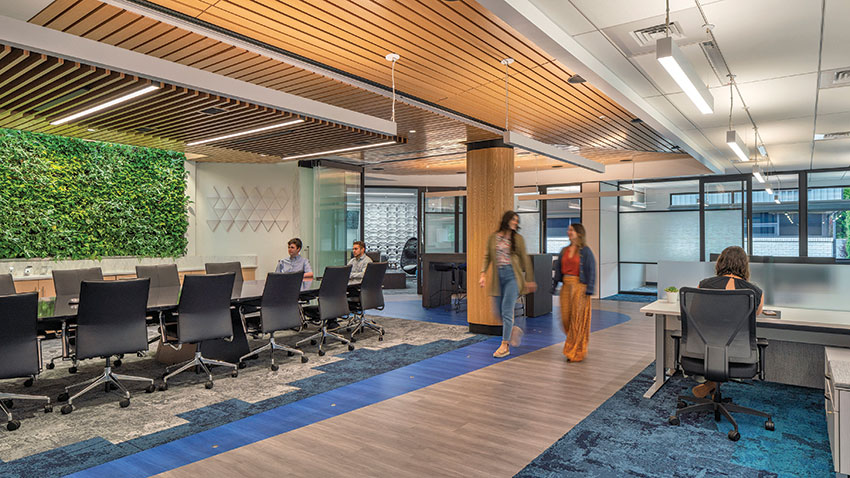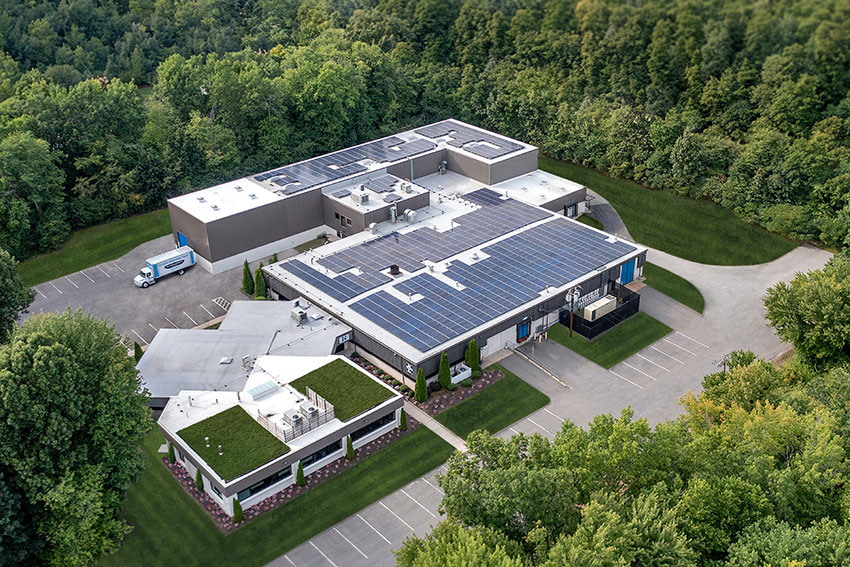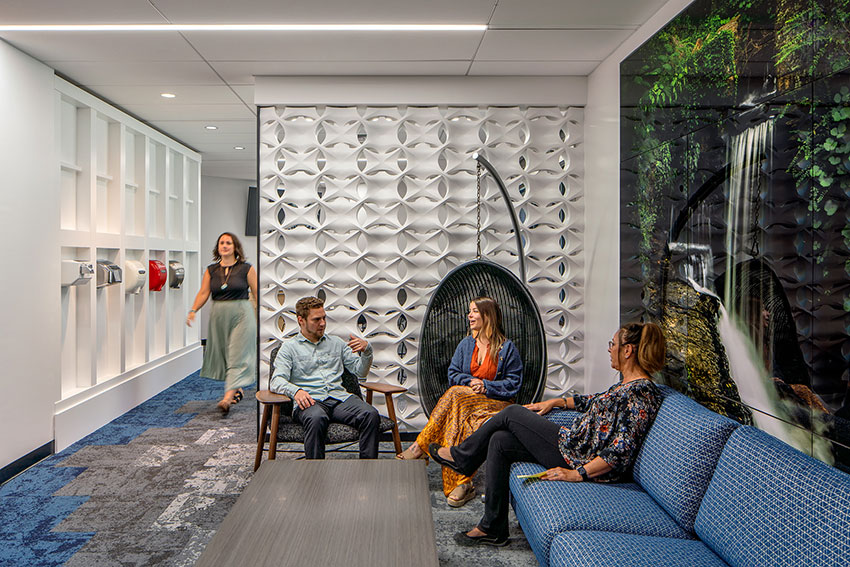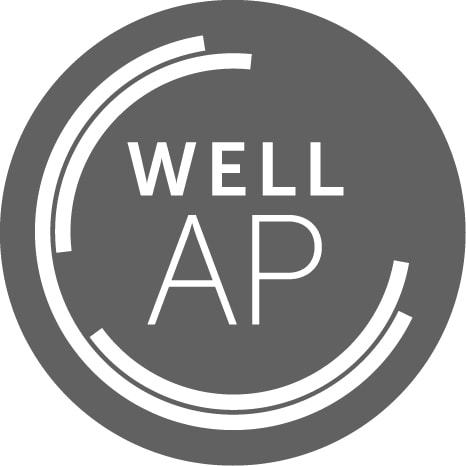The WELL Building Standard - Commercial Office Space
Learning Objectives:
- Describe how COVID-19 transformed commercial building design priorities.
- Discuss how the WELL Building Standard helps to create healthier buildings.
- Identify specific features and products geared toward earning WELL Points.
- Define the importance of hand hygiene and new product solutions that support it.
- Apply lessons from a current project to support future commercial office design projects.
Credits:
This course is approved as a Structured Course
This course can be self-reported to the AANB, as per their CE Guidelines
Approved for structured learning
Approved for Core Learning
This course can be self-reported to the NLAA
Course may qualify for Learning Hours with NWTAA
Course eligible for OAA Learning Hours
This course is approved as a core course
This course can be self-reported for Learning Units to the Architectural Institute of British Columbia
COVID-19 changed the world as we know it, and how people live safely in it. This is especially true regarding the design priorities of commercial buildings and people’s perception of them. During the pandemic, many people were tasked with learning how to work from home. As the pandemic ebbed, and people began to come back to commercial office spaces, the office conditions needed to be viewed from a different lens. These spaces needed to be seen as safe and healthy. So it's no mere coincidence that the WELL Building Standard, which focuses on human health and well-being in building spaces, has seen a meteoric rise in the past few years. This course focuses on cutting-edge, human health-centered design priorities for commercial buildings, from lighting to living walls and floor coverings to restrooms, and how pursuing certification in the WELL standard offers guidance and provides third-party verification. This course follows the renovation of a commercial space whose officers used WELL Certification to create what one said was "the healthiest office in the country." A series of short videos highlight products and offer a tour of strategies the company used toward WELL certification.

Photo: William Horne; courtesy of Excel Dryer
The double-sided living wall behind the reception area and in the conference room is a favorite feature among employees.
HOW COVID TRANSFORMED COMMERCIAL BUILDING DESIGN PRIORITIES
The ascent and decline of the COVID-19 pandemic profoundly altered societal views toward hygiene. While scientists warned for years that a virus could cause a worldwide tragedy, it wasn't until COVID-19's emergence that the danger of pandemics—both current and future—became real. The measures taken to prevent the spread of the virus included avoiding crowds, working from home, wearing masks, and increasing proper hand hygiene. While authorities suspended most such measures after the pandemic was declared over, the focus on hand hygiene emerged as a critical practice to continue.
According to the U.S. Centers for Disease Control and Prevention (CDC)1, “Clean Hands Save Lives” and handwashing is one of the best ways to prevent the spread of disease, which includes proper washing with soap and thoroughly drying by using a hand dryer or drying with a clean towel. Drying hands is an essential part of the process. The transmission of bacteria is 1,000 times more likely to occur from wet skin than from dry skin; therefore, the proper drying of hands after washing should be an integral part of the hand hygiene process in health care.2
At the end of the pandemic, companies welcomed employees—who had been working from home for safety reasons—back into the office. But employees wondered: Are these spaces safe to be in? Are they healthy? Is the air clean? Is it sanitary? Will being at work make me sick, or will it make me healthy?
One Company That Prioritized Employee Health and Wellness in its Office Expansion: The issues of workplace safety and employee well-being were paramount for a global manufacturing company in western Massachusetts working on a major addition and renovation to its existing headquarters' office space. "Creating a space post-pandemic, we definitely wanted to focus on the health and wellness of our employees," said William J. Gagnon, Executive Vice President and Chief Operating Officer of Excel Dryer, a family-owned company.
Excel Dryer was already in tune with hand hygiene and other safety strategies as a leading manufacturer of high-speed, high-efficiency hand dryers. Expanding that care to all parts of the project was a natural progression. "My goals were simple," Gagnon said, "to create the most beautiful, sustainable, and healthy workspace possible. It is easy to say, but not easy to accomplish. So I really challenged the architects and designers to focus on innovation and leading-edge technologies in all areas."

Photo courtesy of Excel Dryer
The addition and renovation includes a living roof and photovoltaics.
Toward the goal of a healthy office space, Gagnon began working with architect Katherine Brekka, AIA, LEED AP, WELL AP, Senior Associate with Fennick McCredie Architecture in Boston. "Our major priority on this project," Brekka explained, "was to ensure we were employing design strategies to promote the health and wellness of the occupants as much as possible."
She said, "We want people to be excited to come to work." From the beginning, Gagnon targeted WELL certification. His goal was for the design to reach the latest international standards for health and wellness, which led the team to the International WELL Building Institute (IWBI) and the WELL Building Standard.
HOW THE WELL BUILDING STANDARD HELPS CREATE HEALTHIER BUILDINGS
The WELL Building Standard focuses on the health and well-being of occupants. While WELL is newer and less known than the LEED, Energy Star, and BREEAM rating systems, it is growing exponentially. Today, the WELL Building Standard is being applied in more than 40,000 buildings in some 124 countries and encompassing more than 4.7 billion square feet of real estate around the globe.
According to the WELL website: "We're leading a global movement to transform health and well-being with our people-first approach to buildings, organizations and communities. We do this using our WELL Building Standard (WELL), a roadmap for creating and certifying spaces that advance human health and well-being.

Photo courtesy of Excel Dryer
Images of nature increase employee heath and welfare.
"Developed over 10 years and backed by the latest scientific research, WELL sets pathways for accomplishing health-first factors that help every one of us to do our best work and be our best selves by supporting our physical and mental health across 10 core concepts.
Rigorous performance standards for design interventions, operational protocols, and company-wide practices are verified by a third party." The WELL Building Standard was first launched in 2014, but research on it began in 2010. A two-year pilot phase of the second iteration of the WELL standard, WELL v2, premiered in 2018. The WELL v2 standard comprises 10 Concepts, within which are several Features. Some Features are mandatory for achieving WELL certification (called preconditions), and some are optional for earning more points (called optimizations).
The 10 Concepts of WELL are:
- Air
- Water
- Nourishment
- Light
- Movement
- Thermal Comfort
- Sound
- Materials
- Mind
- Community


















